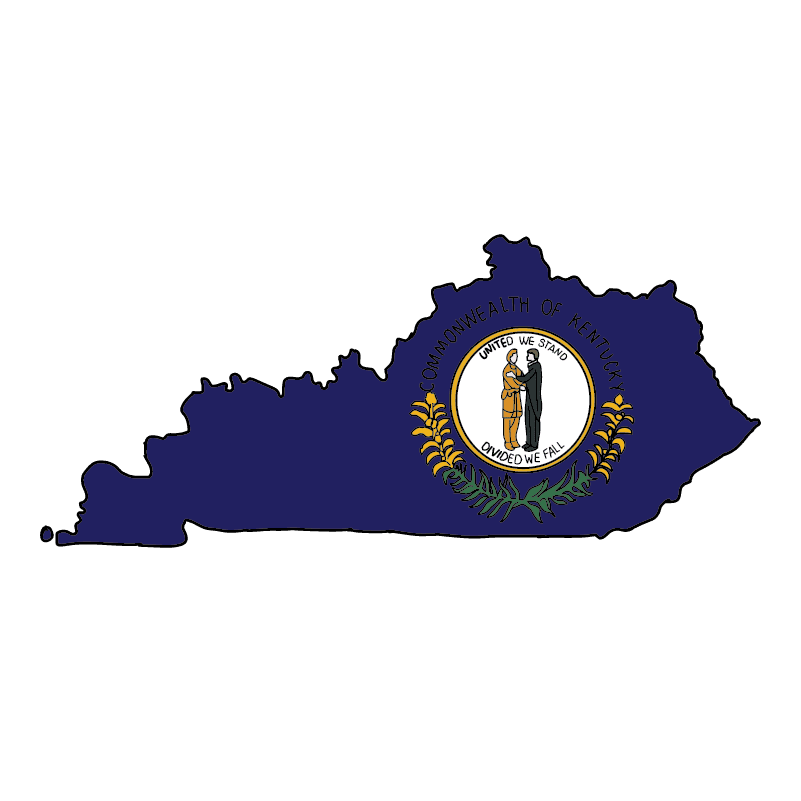In the state of Kentucky, the rose is not just a mere flower but it also holds profound meaning in the state’s history and culture. The state is known for its horse racing tradition. In fact, the Kentucky Derby is often referred to as “The Run for the Roses.” But why exactly are roses so closely associated with this iconic event?
The tradition of presenting roses to the winner of the Kentucky Derby dates back to 1896. At that time, the president of Churchill Downs, Colonel M. Lewis Clark, decided to use roses as a way to honor the winning horse. The red rose was chosen as the official flower of the Kentucky Derby, and a garland of 554 roses is draped over the winning horse each year. The rose has since become an integral part of the Kentucky Derby’s cultural identity. It is a symbol of prestige and excellence in the horse racing world.
Beyond the Kentucky Derby, the rose has played a significant role in Kentucky’s history and culture. The state is home to several rose gardens. As an example, the Lexington Rose Garden features over 4,000 roses of more than 100 varieties. Roses are also a popular choice for weddings, and Kentucky’s mild climate makes it an ideal location for growing these delicate flowers. In addition, the rose has been used in various forms of art, including literature, music, and visual art, and continues to inspire artists and writers to this day.
Historical Roots
Roses have a long and rich history in Kentucky, dating back to the early 1800s. The state’s love affair with the flower began when the first rose bushes were brought over from Europe by settlers. These early roses were primarily used for medicinal purposes, but their beauty and fragrance quickly captured the hearts of Kentuckians.
In the mid-1800s, Lexington became known as the “Athens of the West” due to its thriving horse industry and its cultural contributions to the region. The city’s love for roses grew alongside its reputation for breeding champion horses. Shortly after, Lexington became known as the “Rose Capital of the World.”
The Kentucky Derby has also played a significant role in the state’s love affair with roses. In 1896, the tradition of presenting the winning horse with a garland of roses was born. The garland, which is made up of over 400 roses, has become one of the most iconic symbols of the Kentucky Derby and is known as the “Garland of Roses.”
Over the years, roses have continued to play an important role in Kentucky’s culture and economy. Today, the state is home to several rose gardens and nurseries, and the flower is a popular choice for weddings, funerals, and other special occasions.
Cultural Significance
In Kentucky, the rose has been an integral part of the state’s culture and history for over a century. The Kentucky Derby, one of the most famous horse races in the world, is known as the “Run for the Roses” because of the garland of roses awarded to the winning horse. The tradition of awarding roses to the winner of the Kentucky Derby began in 1896, and since then, it has become an iconic symbol of the state of Kentucky.
In addition to the Kentucky Derby, roses have played a significant role in Kentucky’s history and culture. The state has a long tradition of rose cultivation and has been home to many famous rose gardens, including the Briar Rose Garden and The Arboretum State Botanical Garden of Kentucky.
The cultural significance of roses in Kentucky extends beyond festivals and celebrations. Roses have been used in Kentucky’s arts and crafts, including quilting and embroidery, and have been featured in many Kentucky-based films and television shows.
Overall, the cultural significance of roses in Kentucky is deeply rooted in the state’s history and traditions. From the Kentucky Derby to festivals and celebrations, roses have played a significant role in Kentucky’s culture for over a century.
Economic Impact
The Kentucky Derby is not only a major sporting event but also an economic powerhouse for the state of Kentucky. The roses that are used to make the garland for the winning horse have significant economic importance for the state’s floriculture industry.
According to the Kentucky Department of Agriculture, the state’s floriculture industry generates over $30 million in sales annually. The Kentucky Derby is one of the largest events that drives the demand for flowers in the state. The roses used for the garland are grown in greenhouses in California and shipped to Kentucky for the event.
The roses used for the garland are not the only flowers that are in demand during the Kentucky Derby. The event also drives demand for other flowers such as lilies, orchids, and hydrangeas. Florists in Kentucky prepare for the event months in advance to ensure they have enough flowers to meet the demand.
In addition to the floriculture industry, the Kentucky Derby also has a significant impact on the state’s tourism industry. The event attracts visitors from all over the world who come to watch the race and participate in the festivities. The influx of visitors provides a boost to local businesses such as hotels, restaurants, and souvenir shops.
Overall, the roses used for the garland at the Kentucky Derby have significant economic importance for the state of Kentucky. They contribute to the state’s floriculture industry and also help to drive tourism, making the Kentucky Derby not only a major sporting event but also an economic powerhouse for the state.
Artistic & Literary Influence
Roses have played a significant role in Kentucky’s artistic and literary culture. In literature, roses have been used to symbolize a variety of things, from love and beauty to death and farewell. In Tennessee Williams’ play, The Glass Menagerie, a character is referred to as Blue Roses, emphasizing the enigmatic nature of these flowers. Roses have also been used in poetry. Robert Burns’s famous poem, “A Red, Red Rose,” compares his love to a newly sprung red rose.
In addition to literature, roses have also played a significant role in Kentucky’s visual arts. The Mary Todd Lincoln House, located in Lexington, is home to a beautiful rose garden that was designed to replicate the garden that Mary Todd Lincoln had at the White House during her husband’s presidency. The garden features a variety of roses, including the “Mary Todd,” a pink rose that was named in honor of the former First Lady.
Overall, roses have had a significant impact on Kentucky’s artistic and literary culture, serving as symbols of beauty, victory, and tradition. From the garland of roses awarded to the winner of the Kentucky Derby to the rose garden at the Mary Todd Lincoln House, these flowers continue to inspire and captivate Kentuckians and visitors alike.

EXCLUSIVE Kentucky COLLECTION
Visit Store
From Clothes & Apparel To Home Décor & Accessories. Free Returns. Unique Designs. Worldwide Shipping.
